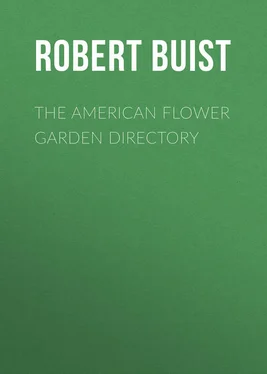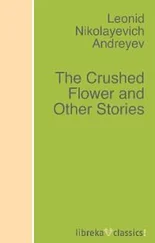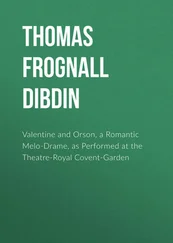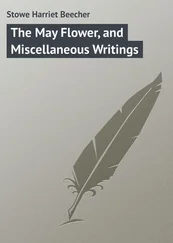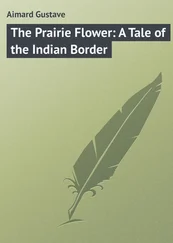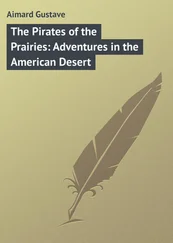Robert Buist - The American Flower Garden Directory
Здесь есть возможность читать онлайн «Robert Buist - The American Flower Garden Directory» — ознакомительный отрывок электронной книги совершенно бесплатно, а после прочтения отрывка купить полную версию. В некоторых случаях можно слушать аудио, скачать через торрент в формате fb2 и присутствует краткое содержание. Жанр: foreign_antique, foreign_prose, на английском языке. Описание произведения, (предисловие) а так же отзывы посетителей доступны на портале библиотеки ЛибКат.
- Название:The American Flower Garden Directory
- Автор:
- Жанр:
- Год:неизвестен
- ISBN:нет данных
- Рейтинг книги:5 / 5. Голосов: 1
-
Избранное:Добавить в избранное
- Отзывы:
-
Ваша оценка:
- 100
- 1
- 2
- 3
- 4
- 5
The American Flower Garden Directory: краткое содержание, описание и аннотация
Предлагаем к чтению аннотацию, описание, краткое содержание или предисловие (зависит от того, что написал сам автор книги «The American Flower Garden Directory»). Если вы не нашли необходимую информацию о книге — напишите в комментариях, мы постараемся отыскать её.
The American Flower Garden Directory — читать онлайн ознакомительный отрывок
Ниже представлен текст книги, разбитый по страницам. Система сохранения места последней прочитанной страницы, позволяет с удобством читать онлайн бесплатно книгу «The American Flower Garden Directory», без необходимости каждый раз заново искать на чём Вы остановились. Поставьте закладку, и сможете в любой момент перейти на страницу, на которой закончили чтение.
Интервал:
Закладка:
Thomas Hibbert, Robert Buist
The American Flower Garden Directory Containing Practical Directions for the Culture of Plants, in the Hot-House, Garden-House, Flower Garden and Rooms or Parlours, for Every Month in the Year
PREFACE
This volume owes its existence principally to the repeated requests of a number of our fair patrons, and amateur supporters, whose enquiries and wishes for a practical manual on Floraculture, at last induced us to prepare a work on the subject. That now offered is given unaffectedly and simply as a plain and easy treatise on this increasingly interesting subject. It will at once be perceived that there are no pretensions to literary claims – the directions are given in the simplest manner – the arrangement made as lucidly as was in our power – and the whole is presented with the single wish of its being practically useful. How far our object has been attained of course our readers must judge. Nothing has been intentionally concealed; and all that is asserted is the result of minute observation, close application, and an extended continuous experience from childhood. We pretend not to infallibility, and are not so sanguine as to declare our views the most perfect that can be attained. But we can so far say, that the practice here recommended has been found very successful.
Some very probably may be disappointed in not having the means of propagating as clearly delineated as those of culture; but to have entered into all the minutiæ connected therewith, would have formed materials for two volumes larger than the present. We might have described that branch, as it has already been done in works published both on this continent and in Europe. In one of the former it is said, "You may now propagate many kinds ( Exotic Plants ) by suckers, cuttings, and layers, which should be duly attended to, particularly such as are scarce and difficult to be obtained." And the directions given in one of the most extensive works in Europe on the propagation of an extensive genus, varied in character and constitution, run thus: "Cuttings of most kinds will strike root. From the strongest growing kinds, take off large cuttings at a joint, and plunge them in a pot of sand under a hand-glass in the bark bed. Of the smaller kinds take younger kinds, and put them under a bell-glass, also plunged in heat. The sooner the plants are potted off after they are rooted the better."
Such instructions to the inexperienced, are imperfect and unavailing, which, we flatter ourselves, is not the character that will attach to the present work. We are well aware that there are persons, who, to show their own superior abilities, may cavil and say that there is nothing new. To such critics it may be answered, if arranging, simplifying, digesting, and rendering Floraculture attainable by the humblest capacity, with useful lists and tables on a plan quite novel, as we believe – offer nothing new, it may at least be called an improvement. However, we submit all to a generous public, to whom we are already under many obligations.
Hibbert & Buist.Philadelphia, April 18th, 1832.
INTRODUCTION
In presenting this work, constructed as a monthly calendar, which is the most simple and easy method to convey the necessary operations of the year, considerably more labour has been expended, than was at first expected, to render it as accurate as possible. Some verbal mistakes may have been overlooked in the botanical names. Where such occur, the list of names at the end of the volume will enable the reader to correct them; as well as the accentuation. For such other errors as may be discovered, the indulgence of the reader is solicited.
Frequently, in the description of plants, there are Botanical and English names compounded, in order the more clearly to elucidate their several parts to those who are not fully acquainted with scientific terms. The description of the colour of flowers and habits of plants will be useful to such as are at a great distance from collections, in enabling them to make selections judiciously.
Those plants described and recommended have all, with a few exceptions, passed under our own observation, and are generally such as are most worthy of attention, either for beauty of flower, foliage, or habit, together with those celebrated in arts and medicine. Many may possibly have passed unobserved, either from their being very generally known, or difficult to obtain; but in no case has there been suppression from selfish motives. Where the words "our collections" occur, it is meant for those of the country generally, and especially those immediately in the vicinity of Philadelphia. In all our observations, no regard has been paid to what has been written by others, either in the way of depreciation, or of particular appreciation. Perhaps some other cultivators may differ from us respecting culture and soil; however this may be, we rest satisfied, as our work is designedly and professedly given as the result of our own experience, the plan laid down is our own routine of culture, and the soils are those which we adopt. We do not say that there is no soil in which the plants will not grow better, fully aware that every art and profession is subject to improvement. The table of soils has been constructed at the expense of much labour, and condensed as much as possible; to every one that has a single plant it will be found invaluable. Many are the publications in Europe on Gardening and Floraculture, the directions in which, when practised in the United States, prove almost a perfect dead letter. A work adapted to the climate must be the guide in this country, and not one which is foreign to us in every respect. On this account a work like the present has been a desideratum, considering the rapidly increasing and interesting advancement of the culture of flowers amongst the fair daughters of our flourishing republic.
To aid them and others seeking information in this instructive and delightful pursuit – to enable them to examine more minutely, and judge more correctly of the qualities, properties, and beauties of plants – have been prominent objects in this publication. Here, as knowledge is increased, the warmer will be the devotion of the delighted student; and as the mind correspondingly expands, the desire for further information will keep pace – advancing constantly in the development of nature, the mind will participate in the enjoyment, and become meliorated and purified – as the study of nature's works inevitably lead to the contemplation of nature's God, and the result of the whole prove a harmonious combination of personal gratification and mental improvement.
OMITTED IN MARCH
Jasmìnum , Jasmine. A few species of this genus are celebrated either for the Green-house or Rooms. J. odoratíssimum , Azorian, has very sweet-scented yellow flowers, blooming from April to November. J. revolùtum is the earliest flowering one, and of the same colour; it is apt to grow straggling, and should be close pruned as soon as done blooming, which will be about June. J. grandiflòrum is frequently called Catalonian, and should be pruned early in spring to make it bloom well, especially old plants. J. officinàle is a hardy climbing plant for arbours, walls, &c. There are several varieties of it, and it is reported there is a double one.
Hot-House
JANUARY
At all times be very careful of the temperature of this department, and more especially at this season of the year, as a few minutes' neglect might materially injure many of the delicate plants. The thermometer ought to range between 58° and 65°. In fine sunshine days, admit a little air by having some of the top sashes let down, one, two, or three inches, according to the weather, and let it always be done from eleven to one o'clock; but by no means in such a manner as to cause a draught in the interior of the house, which would be very prejudicial. Therefore be always cautious during cold weather, in administering that necessary element to vegetation, which is so conducive to health.
Читать дальшеИнтервал:
Закладка:
Похожие книги на «The American Flower Garden Directory»
Представляем Вашему вниманию похожие книги на «The American Flower Garden Directory» списком для выбора. Мы отобрали схожую по названию и смыслу литературу в надежде предоставить читателям больше вариантов отыскать новые, интересные, ещё непрочитанные произведения.
Обсуждение, отзывы о книге «The American Flower Garden Directory» и просто собственные мнения читателей. Оставьте ваши комментарии, напишите, что Вы думаете о произведении, его смысле или главных героях. Укажите что конкретно понравилось, а что нет, и почему Вы так считаете.
